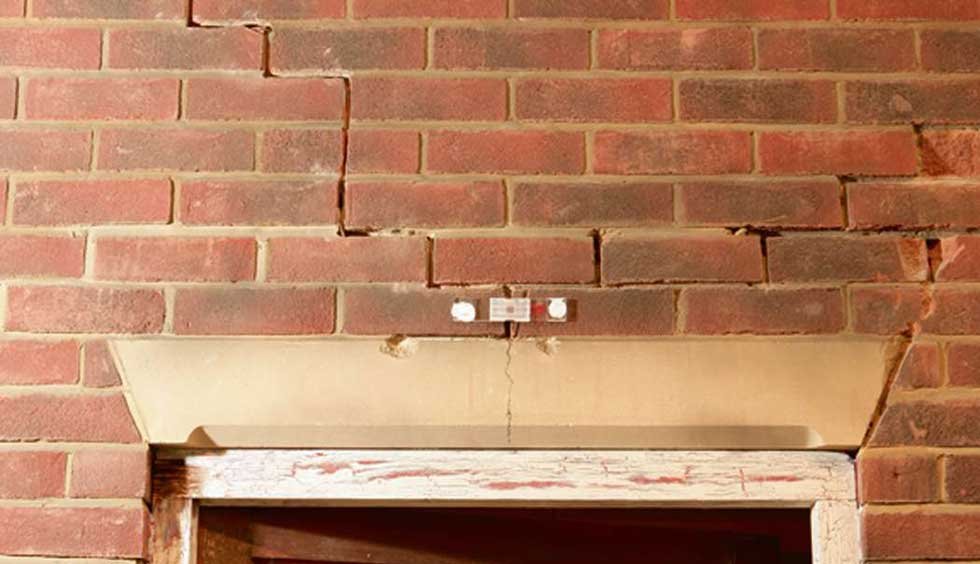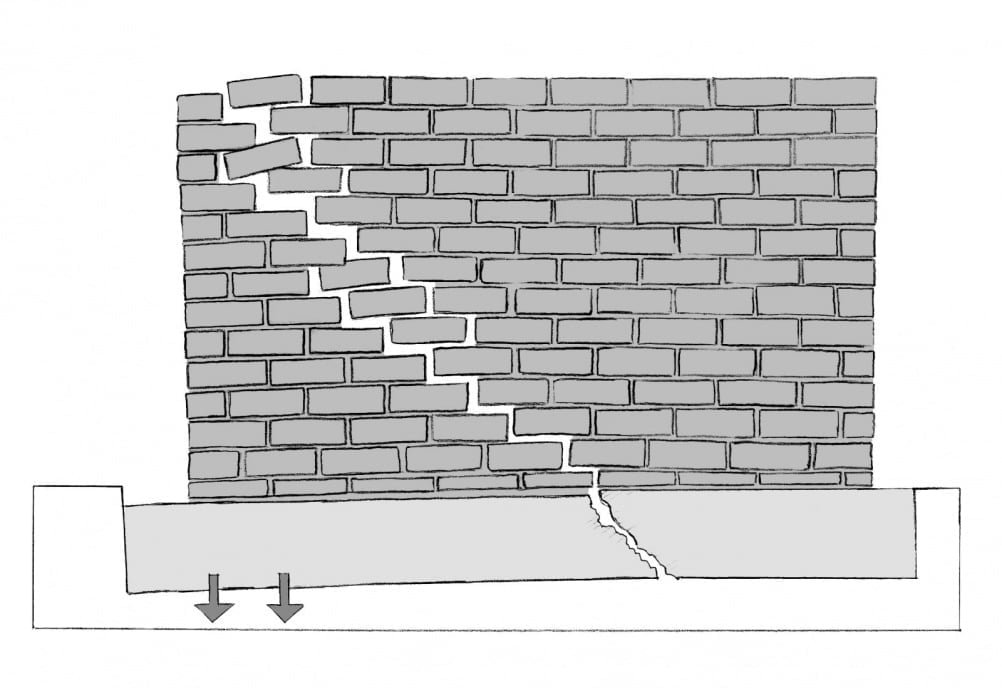How to spot the signs, how to treat it and what the long term implications may be
What are the signs of subsidence?
It is helpful to know what to look out for when viewing properties to renovate, and although a full structural survey will almost certainly identify a subsidence problem, there are a few signs you can identify, too.
The first obvious sign is the appearance of cracks in walls, ceilings and floors. However, it is important to bear in mind that not all cracks indicate a subsidence problem. Some cracks, especially those in newer houses, are the result of the building settling under its own weight, whilst small cracks in freshly plastered walls are nothing to worry about either. All buildings shrink and swell over time, causing cracks where walls and ceilings meet, and once again, this is not a sign of subsidence.
The ones to watch out for are small cracks, usually running diagonally, that appear quite suddenly in plaster and also on exterior brickwork, around doors and windows in particular. Cracks that indicate that there may be subsidence are usually thicker than a couple of milimetres and are wider at the top. Distortion of the building will also cause doors and windows to stick or fail to close. Another sign is rippled wallpaper, with no signs of damp to attribute this to.
If you spot any of these signs, call in a chartered surveyor who will be able to confirm whether there is a problem and also tell you the likely cause. You might also need specialist geological and drain surveys to be carried out.
How is subsidence treated?
There are several ways to treat subsidence, depending on its cause. Underpinning is something that springs to most people’s minds when they hear a house has subsidence, but the Institution of Structural Engineers recommends it is only a last resort. It is estimated that less than 10 per cent of properties with subsidence actually require underpinning.
Underpinning a house prevents further movement by increasing the depth and support of the existing foundations. The standard way of doing this is to dig out short sections underneath the existing foundations and fill them in with concrete. Underpinning is a slow process, with each section having to be inspected before work can continue. It is also an expensive process, costing around $750 per linear metre.
It has been estimated that around 70 per cent of cases of subsidence are caused by tree roots taking the moisture out of the soil. Where this is the case, removing the offending tree or trees may be all that is required to prevent further movement from occurring. A surveyor will be able to recommend who to speak to about the best course of action when it comes to tree removal. Sometimes just pruning the tree will cut down on the amount of moisture it takes from the soil.
If leaking drains, water mains or broken downpipes are the cause of the subsidence, simply repairing them will be all that is needed to stabilise the building, with no underpinning required.
How long will it all take?
Perhaps the most lengthy part of solving subsidence is establishing the cause of the problem and, in some cases, whether subsidence is actually a factor at all. Cracks may need to be monitored and measured for up to 12 months in some instances.
Will there be future problems?
Once the cause of the subsidence has been rectified there should be no further problems. Any underpinning should prevent further movement.
There are several ways to protect the property from further movement, including keeping trees and shrubs well pruned and properly maintaining drains.
Building insurance
Whilst most of the large insurance companies continue insuring houses that have had to undergo treatment or underpinning, they may not always renew it for a new buyer. The Association of British Insurers advises that there are specialist subsidence insurers, but these will be more expensive. You can find them through brokers.
Subsidence: The causes
- Trees and shrubs take moisture from the soil which causes it to shrink, contract and pull the foundations.
- Clay soils are particularly vulnerable to movement, shrinking during dry spells and swelling in the wet.
- Damaged drains can wash soil away from foundations. Soils with a high sand or gravel content are particularly prone to this.
- Previous mining activity in the area might also cause subsidence.



Comments
Post a Comment